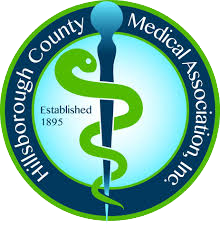 Runner’s knee—known medically as patellofemoral pain syndrome—is a relatively common issue among people who participate in athletic activities such as skiing, cycling, and of course, running. It is most recognized by the pain it causes around, above, or behind the kneecap, which is often described as a dull, aching discomfort.
Runner’s knee—known medically as patellofemoral pain syndrome—is a relatively common issue among people who participate in athletic activities such as skiing, cycling, and of course, running. It is most recognized by the pain it causes around, above, or behind the kneecap, which is often described as a dull, aching discomfort.
Runner’s knee pain often flares up when performing basic movements, such as:
- Walking or running
- Kneeling
- Squatting
- Going up or down stairs
- Standing up or sitting down
Discomfort may also worsen after long periods of sitting with your knees bent.
Can Runner’s Knee Cause Other Symptoms?
A dull, aching pain isn’t the only possible symptom of runner’s knee. Some people also experience:
- Knee tenderness
- A sensation of knee instability or weakness
- Knee swelling
- Audible clicking, popping, grinding, or rubbing sounds when bending or straightening your leg
Who Is Most at Risk for Runner’s Knee?
Anyone can develop runner’s knee. However, research shows that it most often impacts:
- Adolescents and young adults
- Athletes in sports that involve frequent running, jumping, or other movements that place strain on the knees
- Females—women are actually twice as likely as men to develop runner’s knee
Can Runner’s Knee Be Prevented?
There’s no surefire way to prevent runner’s knee, but there are several steps you can take to reduce your risk and promote good joint health. For example:
- Lose excess weight to reduce strain on your knees
- Use proper form when running (core tight, knees bent, shoulders down and back)
- Stretch well before and after exercising—don’t forget about your warm-up!
- Invest in properly fitting shoes that provide plenty of cushion
- Wear shoe inserts when exercising if you have flat feet
- Focus on strengthening your quadriceps and hip abductor muscles when working out (avoid deep squats, though)
- If you’d like to increase the intensity of your workouts, do so gradually
- If you play a high-impact sport, consult with a sports medicine or orthopedic specialist about ways to lower your risk of injury
Runner’s Knee Treatment at Tampa Orthopaedic & Sports Medicine Group
Treatment for runner’s knee typically involves resting until the pain subsides. Other techniques, such as taking an over-the-counter pain reliever and placing an ice pack on your knee, can also prove helpful. If self-care methods do not improve your runner’s knee pain, though, it’s time to speak with a medical professional. Physical therapy or minimally invasive procedures may be recommended for some severe cases of patellofemoral pain syndrome.
In Tampa, Florida, many people turn to Tampa Orthopaedic & Sports Medicine Group for expert musculoskeletal care. Our practice is led by orthopedic sports medicine surgeon Dr. Daniel Murphy and sports medicine physician Dr. Arnold Ramirez—two board-certified specialists who also serve on the medical staffs of the Tampa Bay Buccaneers and the New York Yankees.
Don’t let runner’s knee pain keep you sidelined. Contact Tampa Orthopaedic & Sports Medicine Group today to schedule an appointment, or request an appointment online when it’s convenient for you. We look forward to helping you achieve your best orthopedic health.












